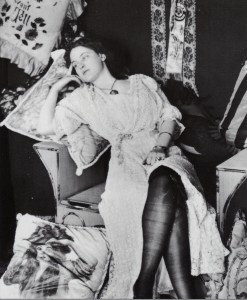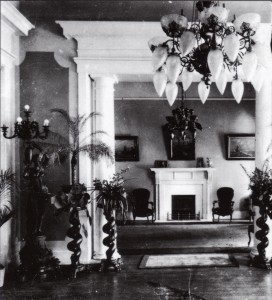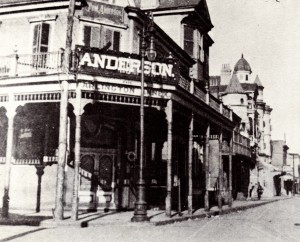Myth has it that jazz was born in the brothels of Storyville, New Orleans’ famous Red Light District. In fact, much of the music in 'the District’s' high-class bordellos sounded more like parlor music than jazz. On the streets, in dance halls and in Storyville cabarets like The Big 25 and Pete Lala’s, Freddy Keppard and King Oliver experimented with music so new, it didn’t even have a name.
Frank Walker, the pioneering A & R man who signed Bessie Smith to Columbia Records, remembered the 1918 jazz scene in New Orleans as, “…The University of Jazz…a certain combination of hot weather, dumps and dives and people that only New Orleans could provide,” created fertile ground for a vibrant new music.
Storyville covered sixteen square blocks from Iberville to St. Louis, and Robertson to Basin Streets. Every nightspot had its own brand of music. The Tuxedo Dance Hall was known for ragtime, Pete Lala’s had its trumpet kings, and bordellos had their “professors” of the piano. What all nightspots in the District had in common were liquor, prostitution, music and gambling. And it was legal—most of it, anyway.
Basin Street was the center of the action for bordellos catering to white clientele. At Number 235 Basin you’d find Lulu White’s Mahogany Hall, the most famous bordello in town. Down the block, The Countess Willie Piazza held her nightly salon in a sumptuous Italian-style villa, where Jelly Roll Morton played ragtime dances on her white grand piano.

Marguerite Griffin, an attraction at Minnie White's place at 221 North Basin Street. Photo courtesy of Storyville, New Orleans by Al Rose.
At Gypsy’s on Villere Street Tony Jackson would pull out one of his fast tempo pieces when a ‘naked dance’ was called, and a beautiful young woman danced nude on a small table top, spinning faster and faster to the music. Jelly Roll once explained, “In New Orleans, the naked dance was art.”
In “black Storyville” the action centered around South Rampart and Perdido Streets where bluesman Buddy Bolden blew down all competitors with his hot trumpet licks in the Funky Butt Dance Hall until he retired to the state asylum for the insane.
This week on Riverwalk Jazz New Orleans natives Vernel Bagneris and Topsy Chapman join The Jim Cullum Jazz Band on stage at The Landing to visit turn-of-the-century New Orleans, where strains of early jazz were heard.
Photo credit for Home Page: Marguerite Griffin, an attraction at Minnie White's place at 221 North Basin Street. Photo courtesy Storyville, New Orleans by Al Rose.
Text based on Riverwalk Jazz script by Margaret Moos Pick ©2007



